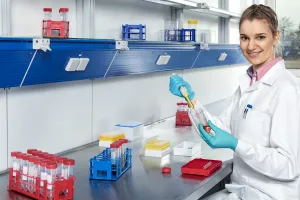QS laboratory performance assessment - Results in detail
About the test design
From an analytical point of view, the potato test matrix is a relatively simple, starch-rich matrix. Thus, the focus of the 30th performance assessment was able to concentrate entirely on the complex analysis of, among other things, sum active ingredients and metabolites.
In total, the test material contained eight active ingredients. For the multimethod analysis, this included the newly approved germ inhibitor 1,4-dimethylnaphthalene, the active ingredients flutolanil, oxathiapiproline, cyantraniliprole and one of each of the three multimethod-capable metabolites of flufenacet, which had never before been tested in the assessment. Furthermore, in addition to an approved phenoxyalkane carboxylic acid, an ester of the same acid was also doped. Here, a further step had to be taken. Only if a single/hydrolysis method is also used it is guaranteed that the legally compliant sum result according to the residue definition is found,
says Dr. Günther Kempe, consultant for residue analysis at QS. The single method to be determined was the heavy metal lead.
Results in detail
The active ingredients 1,4-dimethylnaphthalene, oxathiapiproline and the three flufenacet metabolites were not found by many laboratories, mostly laboratories in the recognition process. This was primarily due to the fact that these active ingredients were not included in your routine spectrum. But as the test results show, even some QS recognized laboratories only had the parent compound in their spectrum and thus could not identify the doped metabolite. The monitoring of these metabolites via the multimethod is mandatory in the QS scheme.
For the determination of phenoxyalkanecarboxylic acids (2,4-D, haloxyfop-P, quizalofop-P) and their esters, hydrolysis (safeguard analysis) had to be performed in case of a positive result via the multi-method in order to comply with the legal residue definition. 24 laboratories did not perform hydrolysis and thus did not correctly implement the QS specifications. In the routine, residue-relevant conjugates could not be detected with this procedure and thus lead to underdetections.
With the findings from the test results, we can address the laboratories specifically on possible deficits. In retrospect, we can therefore say that the focus of the test was correctly chosen
, says Claudia Rotter, responsible for the laboratories in residue monitoring at QS.



